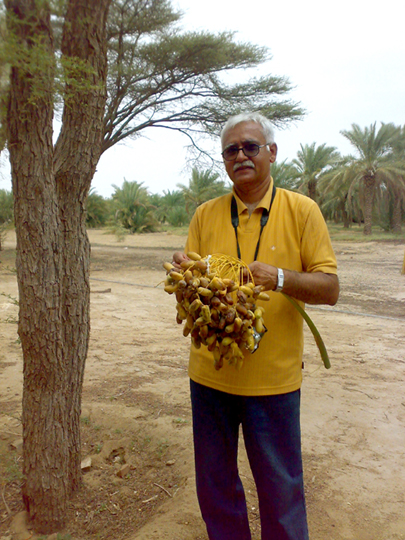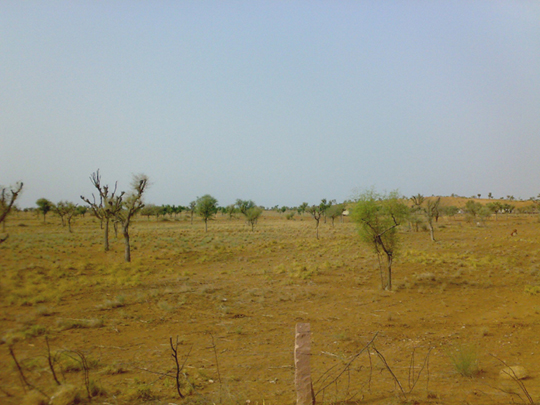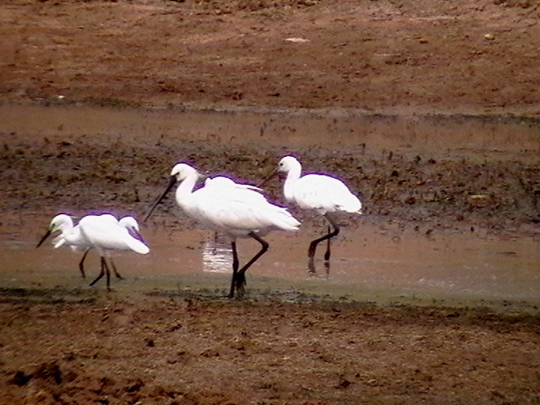Eco-travel
Gajner Wildlife Sanctuary
-Dr.S.P Suryaprakash
The city of Bikaner was founded by Rao Bika ji in 1486 and from its small origins it has developed into the fourth largest city in Rajasthan. The Ganga Canal was completed in 1928 and the Indira Gandhi Canal completed in 1987. & both of them have helped the
farming of crops such as mustard, cotton, groundnuts, wheat and vegetables. Today the Central Arid Zone Research Institute has developed its farm at Beechwal which is growing Dates and other fruits also with the help of Indira Gandhi Canal.

A date with dates
It is amongst top few districts in milk production and hence lot of sweets from milk and milk products are exported from here worldwide. Bikaner is famous for its sweets and snacks (or namkeens in Hindi). Other industries include wool production and the mining
of Gypsum, plaster of Paris and bentonite. Bikaner is situated in the middle of the Thar desert with very little rainfall and extreme variations of temperatures which exceed 50 °C during summer and in the winter it dips to freezing point. Even during my
study period I have experienced the said temperature. Bikaneri Bhujia is a spicy snack made from moth dal, spices and edible oil.

Thar Desert
Bikaner is also known for its handicrafts and leather articles, for its palaces and for having Asia's biggest camel farm National Camel Research Institute. There are are only two in the world the second one is in Australia. The city is also known for its intricately
carved Jharokas. These red sandstone stone jalis (screens) are found on the windows of the Junagarh fort, temples and havelis (mansions of Northern India). Jalis would be used for ventilation and for women to watch the world while remaining hidden. The red
sandstone for these stone window screens was supplied by the nearby village of Dulmera.

Camels
The Gajner wildlife Sanctuary is located at a distance of 32 kms. from the town of Bikaner. Gajner Wildlife Sanctuary used to be royal hunting grounds of the Maharaja of Bikaner. There is a sparkling lake inside the sanctuary and in the sweltering summer months
one can see a variety of wild animals that come to the lake to quench their thirst.
Apart from being a perennial favorite with the resident animal species of Gajner Wildlife sanctuary, the lake also draws a variety of avian species. The Imperial Sand Grouse is particularly conspicuous by its presence in the winter months. Truly, the sanctuary
is a bird watcher's delight.

Cotton Pygmy Goose
The Gajner Wildlife Sanctuary is home to a number of wild animals and some of the resident species include wild-fowls, deer, antelope, nilgai, chinkara, black buck, desert foxes and wild boars to name just a few. Gajner, the sanctuary provides an ideal opportunity
to watch and photography. The Gajner Wildlife Sanctuary, Bikaner also has Indian Houbara Bustards and Demoiselle Cranes.

Spoonbills and Little Egret
|